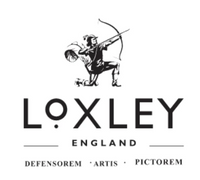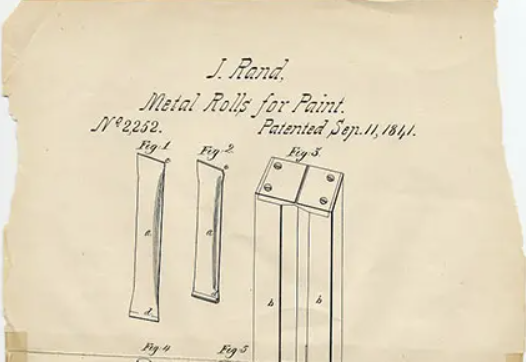History of the Tate
History of the Tate
Back in 1897, Tate made its debut to the public with a single location, showcasing a modest assortment of British masterpieces. Fast forward to today, and Tate has expanded to encompass four prominent sites: Tate Britain, Tate Modern, Tate Liverpool, and Tate St Ives. Not only that, but the Tate is also home to the esteemed national collection of British art spanning from 1500 to the present, as well as an impressive array of international modern and contemporary artworks, totalling nearly 70,000 pieces.

Henry Tate offered his collection of British nineteenth-century art to the nation in 1889 and provided funding for the first Tate Gallery. A campaign began, to create a new gallery dedicated to British art, and with the help of an £80,000 donation from Henry Tate, the gallery Millbank (known today as Tate Britain) was built and opened in 1897.
Sir Joseph Joel Duveen (1843 - 1908) and his son Lord Joseph Duveen (1869 - 1939) also made a significant financial contribution to the original gallery at Millbank. With their support, large extensions were added to the gallery, including seven new rooms.
In 1957, Tate Members was founded as the Friends of the Tate Gallery, in order to raise money to buy artworks and to promote and support the work of the gallery. This fundraising work has made possible the purchase of nearly 400 masterpieces for the gallery.
Tate Britain

Located in the London Borough of Westminster, in an area called 'Millbank' is the home of Tate Britain. The decision was made to build a new gallery for British art on the site of the former Millbank prison in 1892. After many years of planning and preparation, the National Gallery of British Art (now known as Tate Britain) was opened by the Prince of Wales, on the 21st July 1897. Then the gallery was opened to the public on the 16th August 1897.
In 1898, the first extension to the gallery began which doubled the size of the original gallery with a further nine rooms, including a sculpture hall. Later, the original sculpture gallery was demolished to make way for the Duveen Sculpture Galleries. Sir Joseph Joel Duveen offered £20,000 to build an extension to the then called National Gallery of British Art. The new wing was then opened in July 1910 but there was no royal opening, as King Edward VII had recently died. However, King George V visited the gallery on the 9th July 1910, before the public opening on the 18th July 1910.
The new extension was opened by Her Majesty The Queen on the 24th May 1979. This opening included a fantastic firework display on the Thames, designed by John Piper.
The Clore Gallery was built to house the Turner Collection for the nation, this collection includes Turner's sketchbooks and some of his paintings. Her Majesty Queen Elizabeth, The Queen Mother, unveiled the foundation plaque for the Clore Gallery on the 19th April 1983 and on the the 1st April 1987, Her Majesty The Queen, opened the Clore Gallery.
In 2013, Tate Britain was refurbish by the architects Caruso St John. A strong visual connection was created by the design between all levels of the Rotunda with a marble staircase. It drew heavily on the original design, with the new central staircase and the floor of the Rotunda been remade with terrazzo. The new Tate Britain launch part was held on the 18th November 2013.
The new collection at Tate Britain explore 500 years of British art and it is now the home to the world's largest collection of works by JMW Turner.
Tate Modern
The Tate Trustees announced in December 1992 that they had intentions to create a separate gallery for both international modern and contemporary art in London. In 1994, the former Bankside Power Station was selected as the new gallery. The iconic power station was designed by Sir Giles Gilbert Scott and built in two phases between 1947 and 1963. In 1996, the design plans were unveiled and following a £12 million grant, the site was purchased and work began. The turbine hall soon became a dramatic entrance and display area, with the boiler house turned into the galleries.
More than 40 million people have visited Tate Modern, since it opened in May 2000. It is now one of UK's top three tourist attractions and generates an estimated £100 million to London every year. Tate Modern has over a hundred years of art, ranging from modernism in the early 1900s to works created today. This includes paintings from Pablo Picasso and many more famous artists from all over the world.
Tate embarked on a major project in 2009 to develop Tate Modern. The now transformed Tate Modern makes excellent use of the power station's spectacular redundant oil tanks, improving visitor facilities and increasing gallery space.
Tate Liverpool

Alan Bowness, the director of Tate, decided to create a 'Tate of the North' in the 1980s. A warehouse located in the Albert Dock in Liverpool was chosen as the site for the new gallery. Later, in 1985 James Stirling was commissioned to design the Tate Gallery in Liverpool. He transformed the interior into simple, elegant galleries suitable for the display of modern art. In May 1988, the gallery was opened to the public.
More than 600,000 visitors a year visit Tate Liverpool. It is in an ideal position as a venue for major European exhibitions of modern art.
Tate St Ives
Tate had formed a close link with St Ives in 1980 and by the middle of the decade it was decided a gallery should be built there, to display works by artists who had lived or worked in St Ives. St Ives has artistic connections that date back to the Victorian times, when many artists went to St Ives to paint there.
A building was chosen for the gallery, in 1988, which overlooks Porthmeor Beach and the Atlantic Ocean. In 1991, building work began, which was funded by donations from the local community. The gallery later opened in June 1993, and within the first six months, it welcomed over 120,000 visitors. Since then, the gallery has had an average of 240,000 visitors every year, making it a success.
Tate St Ives has been refurbish and extended due to the result of the large number of visitors per year. The new extension which was completed in summer 2017, doubled the size of the exhibition hall, increase facilities and added a new art handling facilities.
You can discover 100 years of art, celebrating how Tate St Ives has welcomed and inspired artists from around the world.






